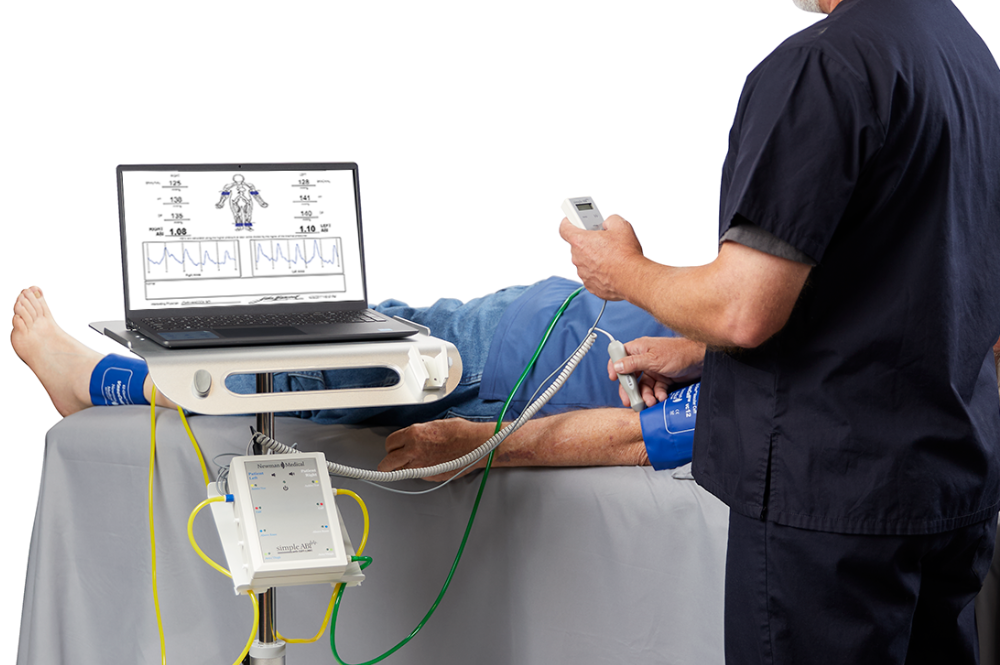ABI Test Cost: Financial Benefits of EVD

Adopting advanced early vascular diagnostics (EVD) tools can present challenges, particularly when cost is a concern. However, in the case of Ankle-Brachial Index (ABI) testing, the initial investment can lead to significant financial benefits for healthcare providers. ABI testing, which assesses the blood flow in the legs and can indicate peripheral artery disease (PAD), is a critical diagnostic tool. This blog will explore the cost considerations of ABI testing and demonstrate how ABI systems offer substantial ROI through reimbursable diagnostics.
ABI Test Cost: Importance of Testing
Peripheral artery disease is a common but often underdiagnosed condition, particularly among older adults and those with risk factors such as diabetes and high blood pressure. PAD is a narrowing of the arteries in the legs, reducing blood flow and potentially leading to severe complications, including heart attack, stroke, and even limb amputation. ABI testing is a simple, non-invasive procedure that compares the blood pressure in the ankle with the blood pressure in the arm to detect abnormalities in blood flow.
Early diagnosis of PAD through this testing can significantly improve patient outcomes by allowing for timely intervention. For healthcare providers, offering testing means enhancing the quality of care while potentially preventing costly complications in patients. Yet, despite these clinical benefits, the cost associated with implementing testing can be a barrier to some practices.
ABI Test Cost: A Barrier or an Investment?
The cost of an ABI test can vary depending on the type of equipment used, the setting in which it is performed, and the healthcare provider’s fees. Typically, ABI tests can range in price per procedure for patients, with the cost of equipment varying significantly based on its sophistication and brand.
When considering the cost of ABI testing equipment, it is crucial to look beyond the upfront expense. Providers must assess the long-term financial benefits, including the potential for increased patient volume, improved patient outcomes, and reimbursement opportunities. For many clinics, particularly those with a high percentage of at-risk patients, the investment in ABI equipment can lead to substantial financial gains over time.
Reimbursement Opportunities for ABI Testing
One of the key factors that make ABI testing a cost-effective solution is the availability of reimbursement through insurance providers, including Medicare. Reimbursement rates can vary by state and insurance plan, but in many cases, healthcare providers can recoup a significant portion of the costs for each ABI test performed.
Medicare typically reimburses providers for ABI tests performed on patients with documented risk factors for PAD. As the demand for vascular diagnostics grows due to an aging population and increasing rates of chronic conditions, the ROI from testing is likely to increase as well.
ABI Systems: A Cost-Effective Solution
Newman Medical offers a range of ABI systems designed to deliver accurate, reliable diagnostics at a competitive price. Their systems are built with healthcare providers’ needs in mind, offering ease of use, durability, and advanced technology that ensures precise measurements every time.
Key Financial Benefits of ABI Systems:
- Affordability: ABI systems can provide cutting-edge technology at a cost that is accessible for both small clinics and larger healthcare facilities.
- Durability: Built for long-term use, these systems require minimal maintenance, reducing long-term costs.
- Reimbursement Potential: With features that meet the requirements for reimbursement, ABI systems can enable healthcare providers to quickly recover their investment.
- Efficiency: These systems streamline the ABI testing process, allowing for faster patient throughput and increased testing volume, contributing to higher revenue potential.
In addition to the financial advantages, in terms of ABI test cost, ABI systems can improve diagnostic accuracy, reducing the likelihood of misdiagnosis and ensuring patients receive the necessary interventions early on. This focus on early detection not only saves lives but also reduces the burden on healthcare systems by minimizing the costs associated with advanced PAD complications.
Conclusion: ABI Test Cost
While the costs of implementing ABI testing may seem daunting at first, the long-term financial benefits make it a wise investment for healthcare providers. The combination of improved patient outcomes, reimbursement opportunities, and the potential for increased patient volume ensures that the ROI from testing is significant. In other words, there is potential for an ABI test cost advantage.
At Newman Medical, our simpleABI systems offer a cost-effective solution that maximizes these financial benefits while delivering accurate, reliable diagnostics. When it comes to ABI test costs, for healthcare providers looking to enhance their diagnostic capabilities and improve their bottom line, investing in ABI testing is a strategic move.
Invest in cost-effective diagnostic solutions with Newman Medical—reach out to us for pricing details today.
